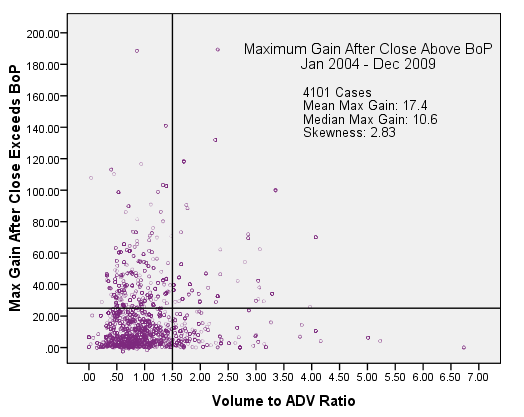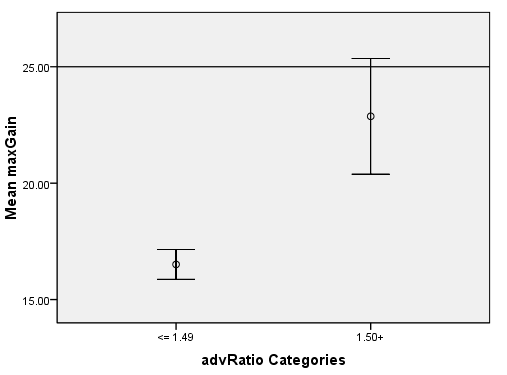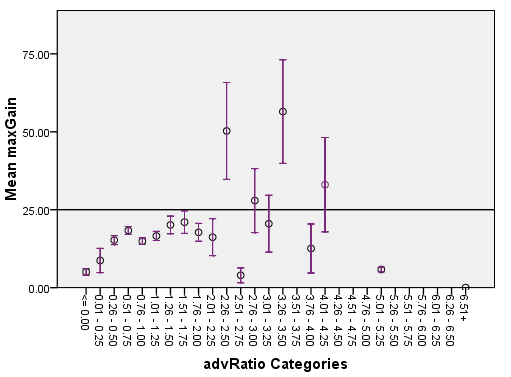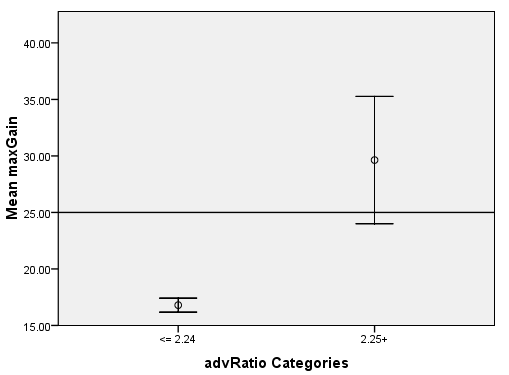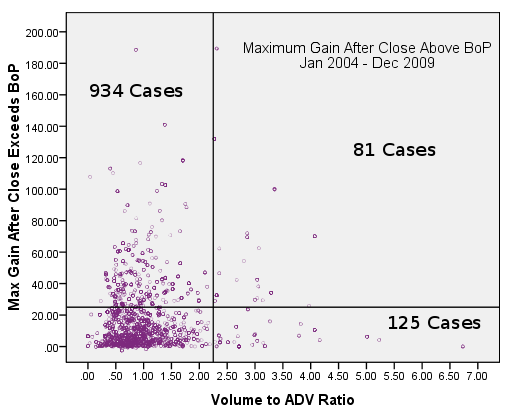
Conclusion
The maximum mean return from breakouts from a cup with handle
base is 17.6% using an 8% stop-loss without considering breakout day
volume as an additional criteria for selection. This shows that
breakouts from a cup-with-handle base can be highly profitable.
There is evidence that there is a relationship between breakout day
volume and subsequent price performance. However, this relationship is
a weak one and at least for cup-with-handle bases, a close above the
breakout price on a volume threshold of 1.5 times average daily volume
is not sufficient to conclude that the breakout can go on to make
significant gains. A volume threshold of 2.25 times adv gives a mean
return above 25% but even then the number of losing cases would
significantly outweigh the number winning cases. Moreover, such a
threshold, and the 1.5 times adv threshold also, would lead to a lot of
highly profitable investment opportunities being missed.
Next time, we will look at other factors that can improve our
return from cup-with-handle breakouts.
